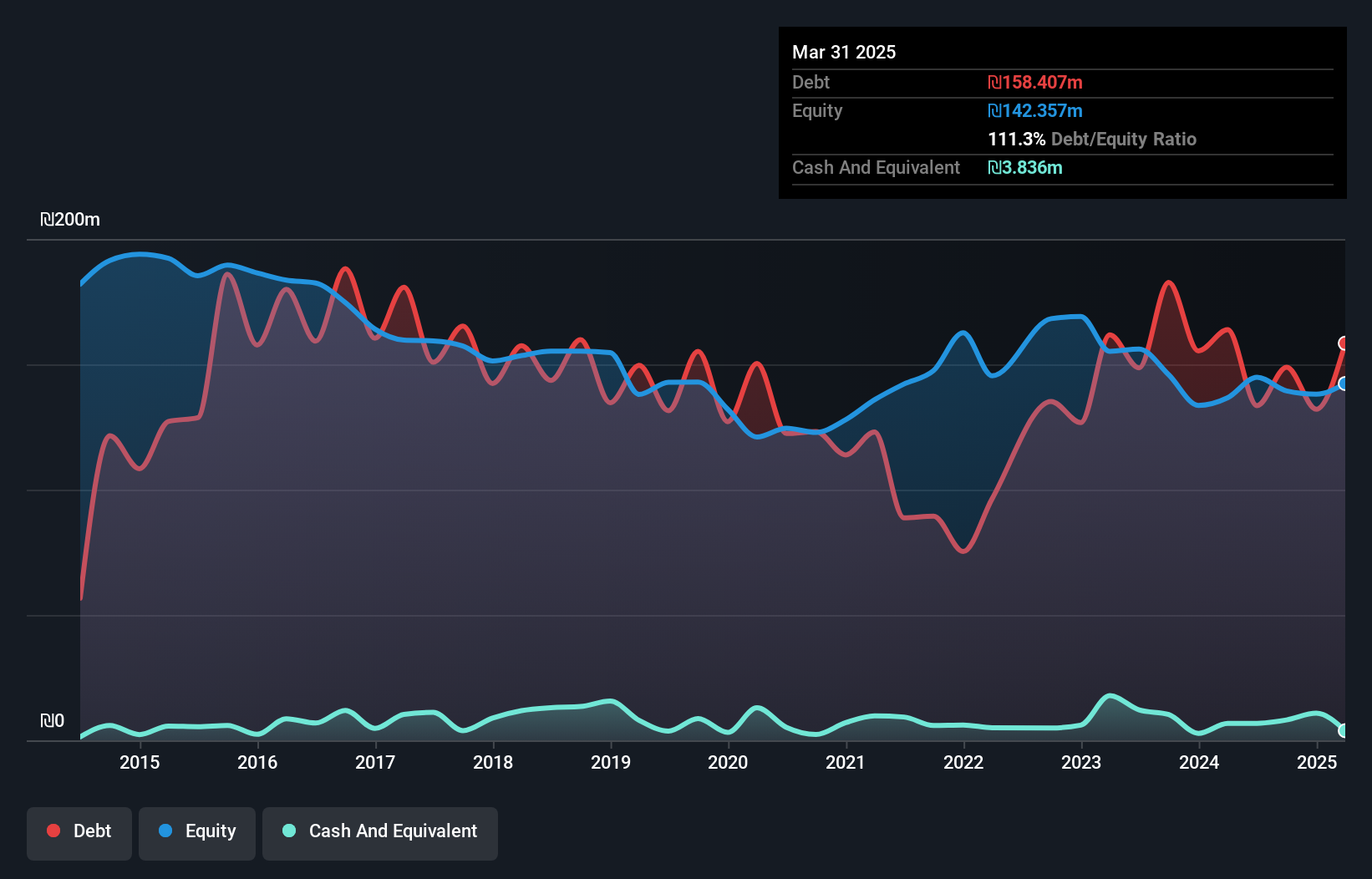Does Brill Shoe Industries (TLV:BRIL) Have A Healthy Balance Sheet?
Legendary fund manager Li Lu (who Charlie Munger backed) once said, 'The biggest investment risk is not the volatility of prices, but whether you will suffer a permanent loss of capital.' So it might be obvious that you need to consider debt, when you think about how risky any given stock is, because too much debt can sink a company. We note that Brill Shoe Industries Ltd. (TLV:BRIL) does have debt on its balance sheet. But should shareholders be worried about its use of debt?
Why Does Debt Bring Risk?
Debt assists a business until the business has trouble paying it off, either with new capital or with free cash flow. Part and parcel of capitalism is the process of 'creative destruction' where failed businesses are mercilessly liquidated by their bankers. However, a more usual (but still expensive) situation is where a company must dilute shareholders at a cheap share price simply to get debt under control. Of course, plenty of companies use debt to fund growth, without any negative consequences. When we examine debt levels, we first consider both cash and debt levels, together.
What Is Brill Shoe Industries's Debt?
As you can see below, Brill Shoe Industries had ₪158.4m of debt, at March 2025, which is about the same as the year before. You can click the chart for greater detail. However, because it has a cash reserve of ₪3.84m, its net debt is less, at about ₪154.6m.

How Strong Is Brill Shoe Industries' Balance Sheet?
According to the last reported balance sheet, Brill Shoe Industries had liabilities of ₪251.2m due within 12 months, and liabilities of ₪248.5m due beyond 12 months. Offsetting this, it had ₪3.84m in cash and ₪126.8m in receivables that were due within 12 months. So its liabilities total ₪369.0m more than the combination of its cash and short-term receivables.
This deficit casts a shadow over the ₪109.6m company, like a colossus towering over mere mortals. So we'd watch its balance sheet closely, without a doubt. After all, Brill Shoe Industries would likely require a major re-capitalisation if it had to pay its creditors today.
View our latest analysis for Brill Shoe Industries
We measure a company's debt load relative to its earnings power by looking at its net debt divided by its earnings before interest, tax, depreciation, and amortization (EBITDA) and by calculating how easily its earnings before interest and tax (EBIT) cover its interest expense (interest cover). Thus we consider debt relative to earnings both with and without depreciation and amortization expenses.
While Brill Shoe Industries's debt to EBITDA ratio (3.4) suggests that it uses some debt, its interest cover is very weak, at 1.3, suggesting high leverage. It seems clear that the cost of borrowing money is negatively impacting returns for shareholders, of late. However, it should be some comfort for shareholders to recall that Brill Shoe Industries actually grew its EBIT by a hefty 2,827%, over the last 12 months. If it can keep walking that path it will be in a position to shed its debt with relative ease. When analysing debt levels, the balance sheet is the obvious place to start. But you can't view debt in total isolation; since Brill Shoe Industries will need earnings to service that debt. So if you're keen to discover more about its earnings, it might be worth checking out this graph of its long term earnings trend.
Finally, a company can only pay off debt with cold hard cash, not accounting profits. So we clearly need to look at whether that EBIT is leading to corresponding free cash flow. Happily for any shareholders, Brill Shoe Industries actually produced more free cash flow than EBIT over the last three years. There's nothing better than incoming cash when it comes to staying in your lenders' good graces.
Our View
We feel some trepidation about Brill Shoe Industries's difficulty level of total liabilities, but we've got positives to focus on, too. To wit both its conversion of EBIT to free cash flow and EBIT growth rate were encouraging signs. Taking the abovementioned factors together we do think Brill Shoe Industries's debt poses some risks to the business. So while that leverage does boost returns on equity, we wouldn't really want to see it increase from here. There's no doubt that we learn most about debt from the balance sheet. However, not all investment risk resides within the balance sheet - far from it. Be aware that Brill Shoe Industries is showing 3 warning signs in our investment analysis , and 1 of those doesn't sit too well with us...
When all is said and done, sometimes its easier to focus on companies that don't even need debt. Readers can access a list of growth stocks with zero net debt 100% free, right now.
Valuation is complex, but we're here to simplify it.
Discover if Brill Shoe Industries might be undervalued or overvalued with our detailed analysis, featuring fair value estimates, potential risks, dividends, insider trades, and its financial condition.
Access Free AnalysisHave feedback on this article? Concerned about the content? Get in touch with us directly. Alternatively, email editorial-team (at) simplywallst.com.
This article by Simply Wall St is general in nature. We provide commentary based on historical data and analyst forecasts only using an unbiased methodology and our articles are not intended to be financial advice. It does not constitute a recommendation to buy or sell any stock, and does not take account of your objectives, or your financial situation. We aim to bring you long-term focused analysis driven by fundamental data. Note that our analysis may not factor in the latest price-sensitive company announcements or qualitative material. Simply Wall St has no position in any stocks mentioned.
About TASE:BRIL
Brill Shoe Industries
Designs, manufactures, imports, procures, markets, and sells footwear and clothing products, and fashion accessories in Israel.
Good value with adequate balance sheet.
Market Insights
Community Narratives



